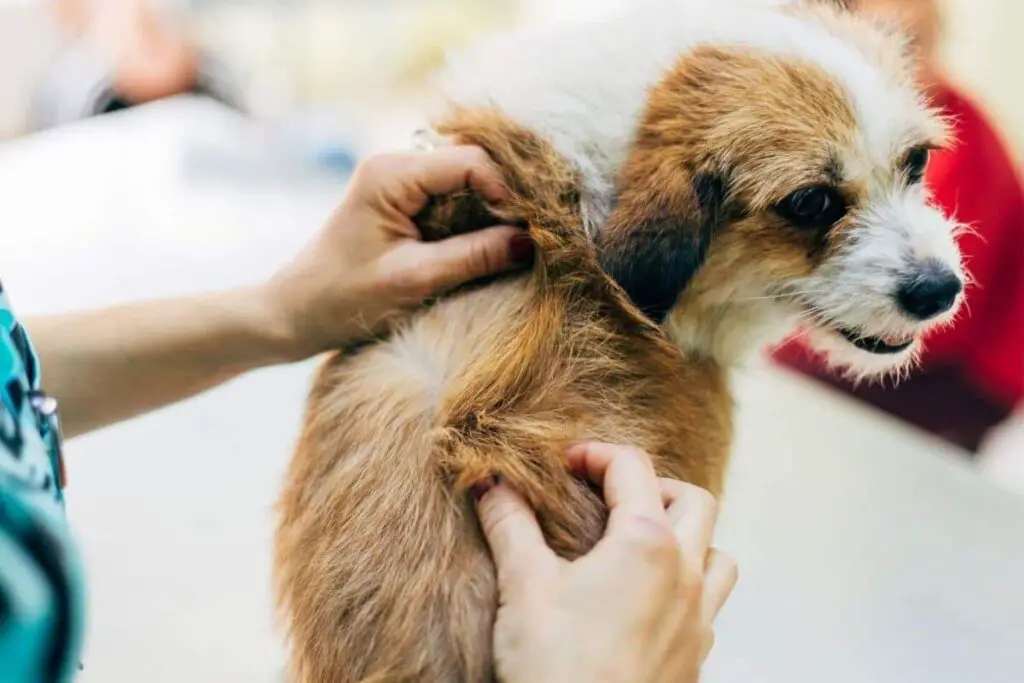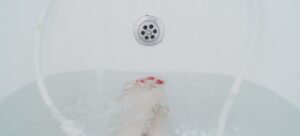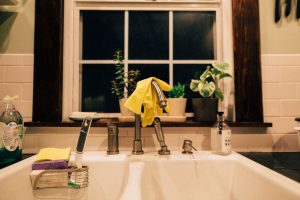Ensuring the well-being of our furry companions involves a meticulous approach to grooming and parasite prevention. A common question that arises in the realm of pet care is, “How long after a bath can I apply flea treatment?” In this comprehensive guide, we explore the factors influencing this decision, the types of flea treatments available, and best practices for maintaining your pet’s optimal health.
I. Understanding Flea Treatments
Fleas, pesky and persistent, are a common concern for pet owners. To combat these tiny parasites effectively, it’s crucial to understand the various flea treatments available. In this comprehensive guide, we explore the types of flea treatments, how they work, and factors to consider in choosing the right approach for your furry companion.
I. Types of Flea Treatments
A. Topical Treatments
Topical flea treatments, often known as spot-on treatments, are applied directly to the pet’s skin. They usually come in small vials and are administered to specific areas, typically the back of the neck. These treatments are absorbed through the skin and provide protection against fleas for a specified duration.
B. Oral Medications
Oral flea medications come in the form of chewable tablets or soft chews. Administered orally, these medications work systemically, circulating in the pet’s bloodstream. When fleas bite, they ingest the medication, leading to their demise. Oral treatments are valued for their ease of administration and efficacy.
C. Flea Collars
Flea collars are worn around the pet’s neck and release chemicals that repel or kill fleas. They provide a continuous and localized form of protection. Collars vary in duration, with some offering protection for several months.
D. Flea Shampoos
Flea shampoos are used during baths to eliminate fleas on the pet’s body. While they provide immediate relief, their effects are generally short-lived. Shampoos may be part of a comprehensive flea prevention strategy.
II. How Flea Treatments Work
A. Disrupting Flea Life Cycle
Many flea treatments target various stages of the flea life cycle. They may kill adult fleas, disrupt the development of flea eggs and larvae, or prevent fleas from reproducing. Combining treatments that address different life stages enhances overall efficacy.
B. Chemical Formulations
Flea treatments often contain insecticides or insect growth regulators. Insecticides kill adult fleas, while growth regulators inhibit the development of eggs and larvae. Some treatments combine both approaches for comprehensive protection.
C. Repellent Properties
Certain treatments not only kill fleas but also have repellent properties. These products create a barrier, deterring fleas from attaching to the pet in the first place. Repellent treatments are valuable in preventing infestations.
III. Factors to Consider
A. Pet’s Health and Age
The health and age of your pet play a significant role in choosing the right flea treatment. Some treatments may not be suitable for very young or elderly pets, or those with specific health conditions. Consult with your veterinarian for personalized recommendations.
B. Lifestyle and Environment
Consider your pet’s lifestyle and environment. Outdoor pets may require different treatments than indoor ones. Additionally, the prevalence of fleas in your region and your pet’s exposure to other animals influence treatment choices.
C. Ease of Administration
Choose a flea treatment that aligns with your pet’s temperament and your ability to administer it. Some pets may resist oral medications but tolerate topical treatments or collars.
IV. Tips for Effective Flea Prevention
A. Consistency is Key
Consistency in administering flea treatments is crucial. Stick to the recommended schedule provided by the product manufacturer or your veterinarian to ensure continuous protection.
B. Environmental Management
Addressing fleas goes beyond treating your pet. Implement environmental measures such as regular vacuuming, washing pet bedding, and using flea control products in living spaces to prevent infestations.
C. Regular Veterinary Check-ups
Schedule regular check-ups with your veterinarian to assess your pet’s overall health and discuss flea prevention strategies. Veterinary professionals can offer insights based on your pet’s specific needs.
V. Conclusion: Tailoring Flea Treatment to Your Pet’s Needs
Understanding flea treatments empowers pet owners to make informed decisions for their furry friends. Tailoring the approach to your pet’s health, lifestyle, and environment ensures effective and safe flea prevention.
By combining knowledge about different flea treatments with consistent application and veterinary guidance, you contribute to your pet’s well-being and create a comfortable, flea-free environment for both pet and owner alike.
II. Post-Bath Considerations
A. Drying Time
One crucial factor in determining when to apply flea treatment after a bath is the drying time. Applying flea treatment to a wet or damp coat can dilute the product’s effectiveness, compromising its ability to spread and adhere to the skin properly.

B. Chemical Interactions
Certain flea treatments may interact with residual shampoo or conditioner on the pet’s fur. It’s advisable to wait until the coat is entirely free of any grooming products before applying flea treatment to avoid potential chemical interactions.
C. Skin Sensitivity
Pets with sensitive skin may benefit from waiting a bit longer after a bath before applying flea treatment. This allows the skin to recover from the potential mild irritation caused by bathing products, ensuring a more comfortable experience for the pet.
III. Recommended Waiting Periods
A. Topical Treatments
For topical treatments, it’s generally recommended to wait at least 24 to 48 hours after a bath before applying flea treatment. This allows the natural oils on the pet’s skin to replenish, providing an ideal environment for the product to be absorbed.
B. Oral Medications
Oral medications are less affected by bathing, as they work internally. However, it’s still a good practice to wait until the pet is fully dry before administering oral flea medications to ensure optimal absorption.
C. Collars and Shampoos
When using flea collars or shampoos, it’s advisable to follow the specific instructions provided by the product manufacturer. Waiting periods may vary, and adhering to these guidelines ensures the product’s effectiveness without compromising your pet’s well-being.
IV. Best Practices for Flea Prevention
A. Consistent Treatment Schedule
Maintaining a consistent flea prevention schedule is crucial for the well-being of your pet. Whether using topical treatments, oral medications, or collars, following the recommended application intervals ensures ongoing protection.
B. Environmental Control
In addition to treating your pet, consider implementing measures to control fleas in your home environment. Regular vacuuming, washing pet bedding, and using flea control products in your living spaces contribute to a comprehensive flea prevention strategy.
C. Veterinary Guidance
Consulting with your veterinarian is key to determining the most suitable flea prevention approach for your pet. Vets can provide personalized recommendations based on your pet’s health, lifestyle, and specific needs.
V. Conclusion: Prioritizing Pet Comfort and Wellness
In conclusion, the timing of applying flea treatment after a bath involves a balance between ensuring the product’s effectiveness and considering your pet’s comfort. Waiting for the coat to dry and taking into account any potential skin sensitivity are crucial steps in optimizing flea prevention efforts.
By following recommended waiting periods and incorporating a holistic approach to flea prevention, you contribute to your pet’s overall comfort and well-being. Remember, the key to effective flea control lies in consistency, attentiveness to your pet’s needs, and collaboration with veterinary professionals to tailor a comprehensive prevention plan.
VI. Addressing Common Concerns
A. What if My Pet Requires More Frequent Baths?
Some pets, due to medical conditions or lifestyle factors, may need more frequent baths. In such cases, it’s essential to consult with your veterinarian to determine a bathing and flea treatment schedule that aligns with your pet’s specific needs.
B. Can I Bathe My Pet After Applying Flea Treatment?
While waiting after a bath before applying flea treatment is crucial, the reverse question is also common. In general, it’s recommended to wait a few days after applying flea treatment before giving your pet another bath. This allows the treatment to be fully absorbed and maximizes its efficacy.
VII. Tips for Successful Flea Treatment Application
A. Follow Product Guidelines
Always adhere to the guidelines provided by the flea treatment product. Different products may have specific recommendations regarding application intervals, waiting periods, and compatibility with other grooming products.
B. Use Appropriate Dosages
Ensure you’re using the correct dosage for your pet’s size and weight. Using too much or too little of the flea treatment can affect its efficacy and potentially harm your pet.
C. Monitor for Adverse Reactions
Keep an eye on your pet for any signs of adverse reactions to flea treatments. These may include excessive scratching, redness, swelling, or behavioral changes. If you observe any concerning symptoms, contact your veterinarian promptly.
VIII. Integrating Flea Prevention into Pet Care Routine
A. Regular Check-ups
Schedule regular veterinary check-ups to assess your pet’s overall health and discuss flea prevention strategies. Veterinarians can offer insights into the most effective and safe products based on your pet’s specific health status.
B. Grooming Practices
Incorporate regular grooming into your pet care routine. Brushing your pet’s coat not only helps in distributing natural oils but also allows you to detect any signs of fleas or skin issues early on.
C. Environmental Awareness
Be aware of your pet’s environment, especially if they spend time outdoors. Fleas can be present in various outdoor spaces, so understanding potential sources of infestation helps in implementing effective preventive measures.
IX. Conclusion: A Holistic Approach to Pet Wellness
Ensuring your pet’s wellness goes beyond applying flea treatments—it involves a holistic approach that considers their overall health, lifestyle, and environmental factors. While waiting after a bath before applying flea treatment is a key consideration, integrating these practices into a comprehensive pet care routine maximizes their effectiveness.
By staying informed, collaborating with veterinary professionals, and being attentive to your pet’s needs, you contribute to their comfort, health, and happiness. The bond between you and your furry companion is strengthened when their well-being becomes a priority in every aspect of your care routine.
Frequently Asked Questions (FAQs)
How long should I wait after bathing my pet before applying flea treatment?
The recommended waiting period after a bath before applying flea treatment is generally 24 to 48 hours. This allows the coat to dry fully, optimizing the absorption and effectiveness of the treatment.
Can I bathe my pet after applying flea treatment?
It’s advisable to wait a few days after applying flea treatment before giving your pet another bath. This ensures the treatment is fully absorbed and maximizes its efficacy.
What if my pet requires more frequent baths?
For pets needing more frequent baths due to medical conditions or lifestyle factors, consult with your veterinarian to establish a bathing and flea treatment schedule that suits your pet’s specific needs.
How do I monitor for adverse reactions to flea treatments?
Keep a close eye on your pet for signs of adverse reactions, such as excessive scratching, redness, swelling, or behavioral changes. If you observe any concerning symptoms, contact your veterinarian promptly.
Can I integrate flea prevention into my pet’s regular grooming routine?
Yes, incorporating flea prevention into your pet’s regular grooming routine is recommended. Brushing your pet’s coat, scheduling veterinary check-ups, and being aware of their environment contribute to a holistic approach to flea prevention.



